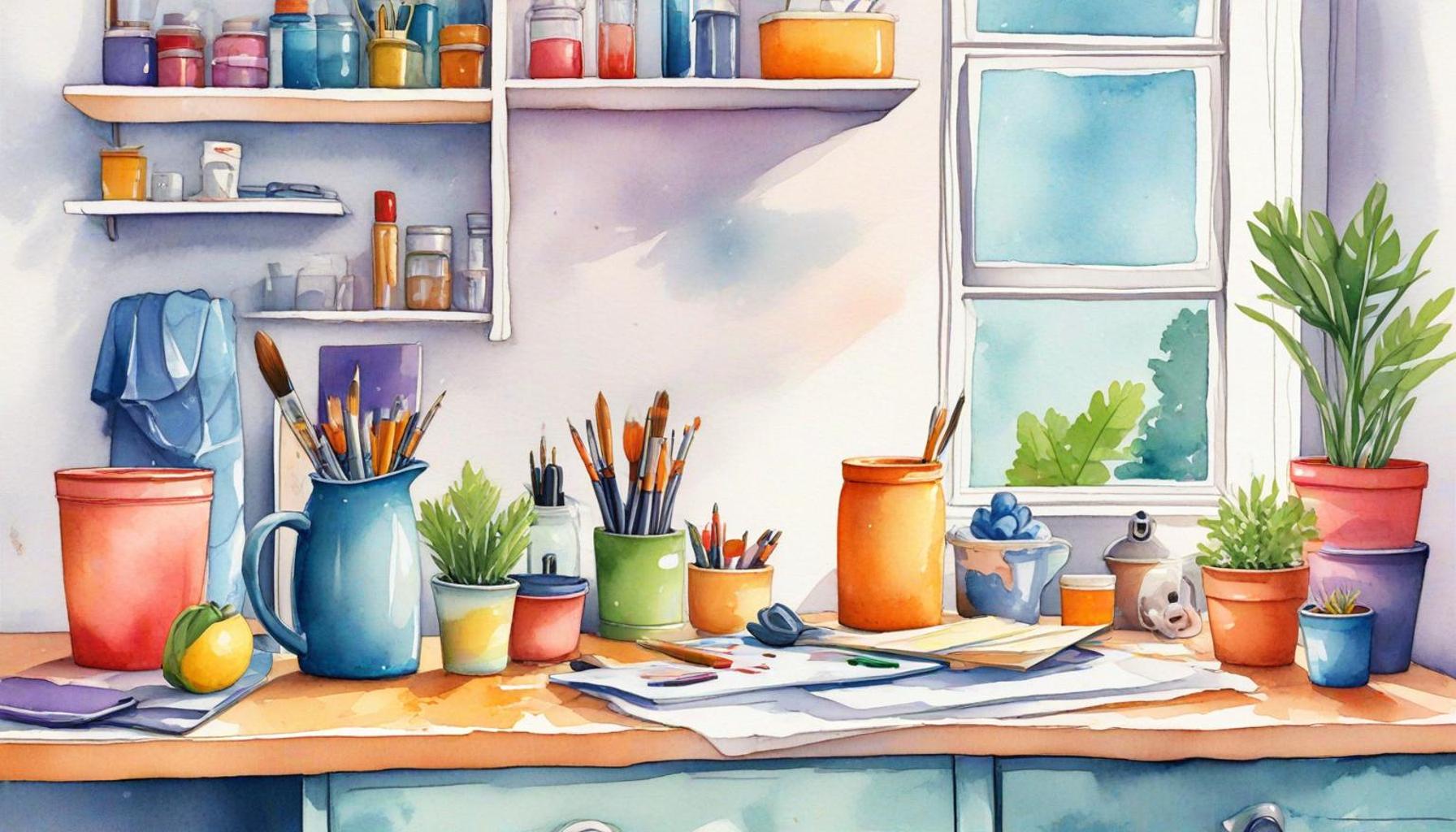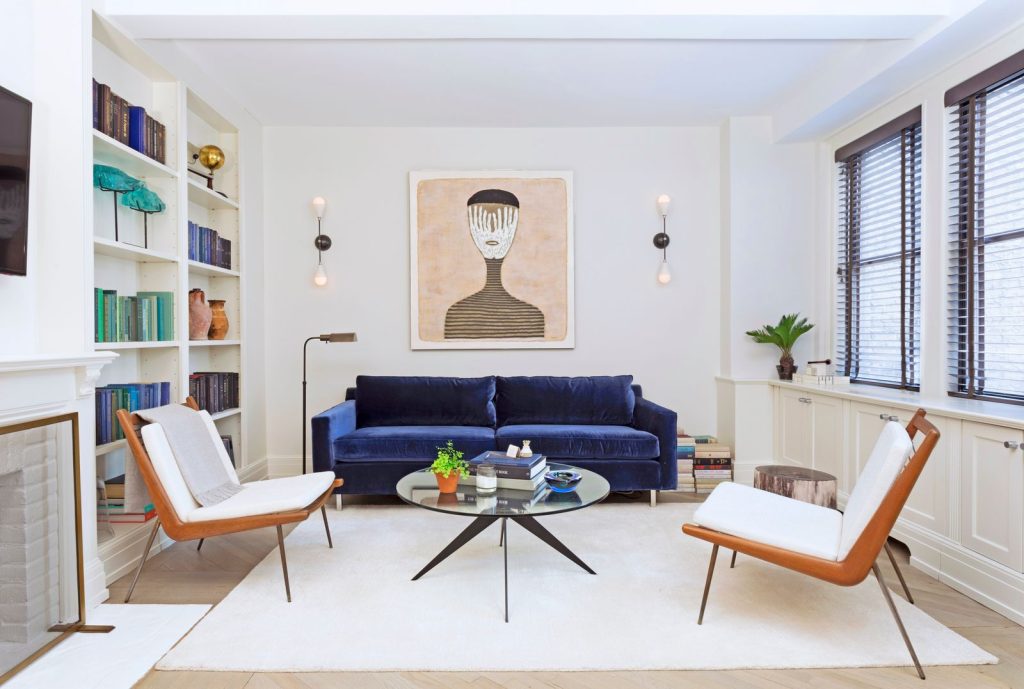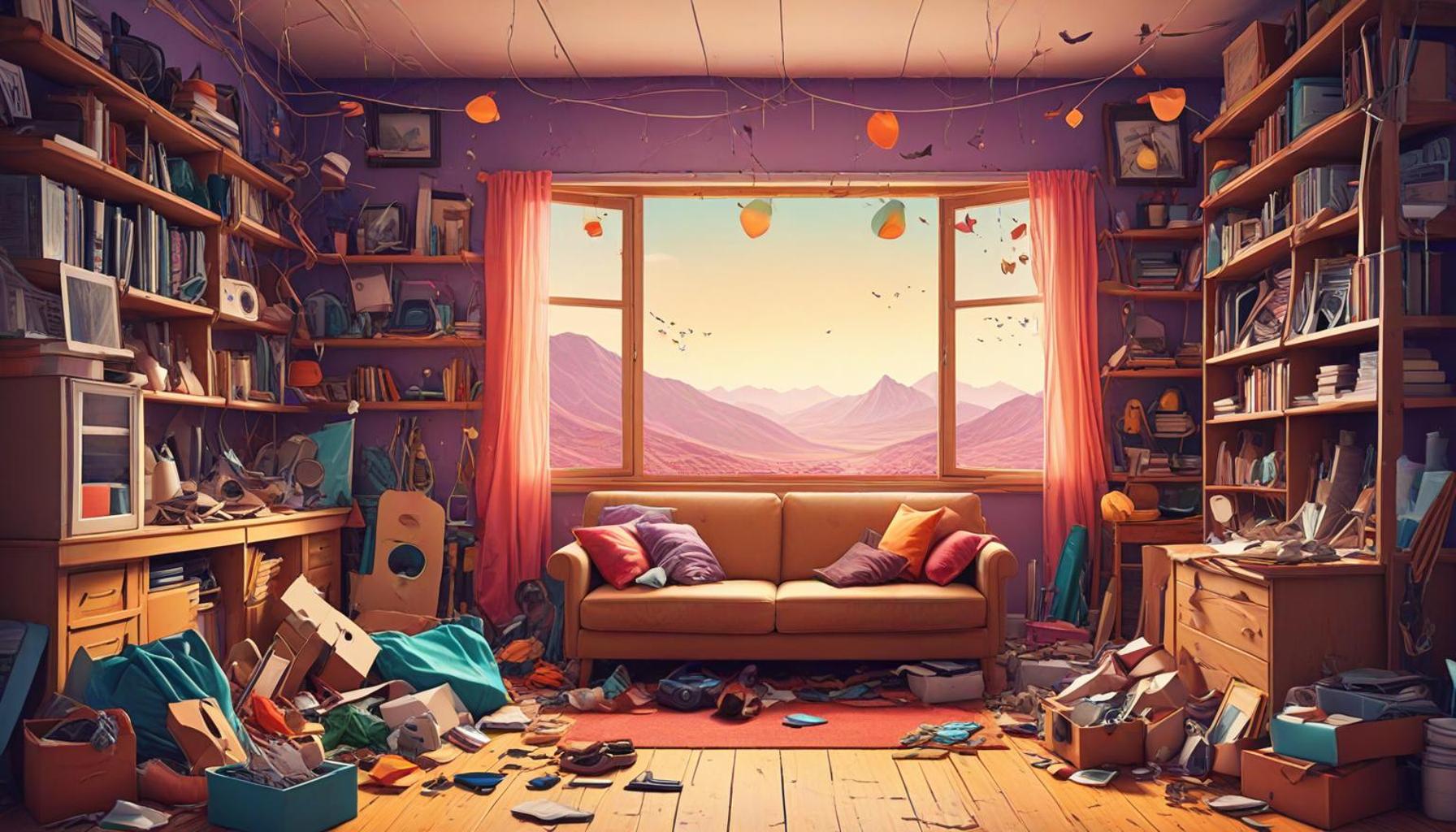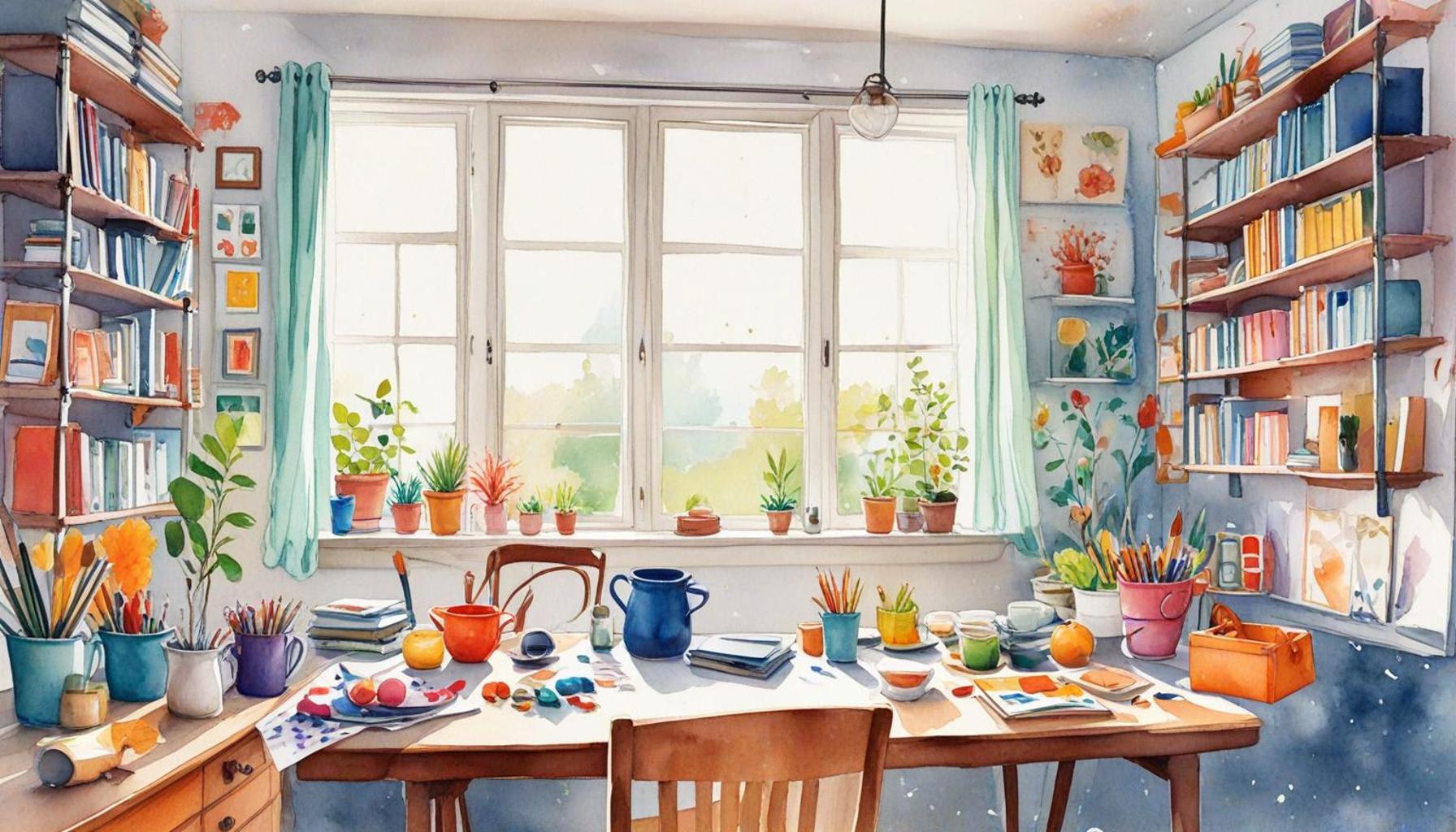Reducing Clutter in Everyday Life: Simple Techniques for Organizing Small Spaces

Understanding the Impact of Clutter on Daily Life
In a world where we are constantly bombarded by stimuli, clutter has become an unwelcome companion in many households across the United States. With the rise of online shopping, minimal living, and the overwhelming desire to keep up with trends, many families find themselves in a constant battle against physical disarray. This struggle is particularly pronounced in urban areas where space is at a premium, and the pressure to maximize limited square footage produces added stress.
Clutter doesn’t just occupy space; it takes a toll on the mind. Research indicates that an untidy environment can lead to feelings of anxiety and overwhelm. The American Psychological Association has noted that visual clutter can diminish your ability to focus, hinder productivity, and even contribute to chronic stress levels. If you’ve ever searched for your car keys only to find a mountain of papers obscuring them, you know firsthand how chaos can disrupt even the simplest tasks.
Transformative Tips for Decluttering
Fortunately, there are straightforward strategies that can transform your living spaces from chaotic to cohesive. Below, we outline several actionable tips to help you reclaim control of your environment:
- Prioritize Minimalism: Minimalism is more than a trend; it’s a lifestyle shift that encourages owning fewer possessions. Consider embracing the idea of “less is more” by evaluating your belongings and deciding what truly adds value to your life. For example, if your closet brims with clothes you haven’t worn in over a year, it may be time to donate or recycle them.
- Embrace Storage Solutions: Multifunctional furniture pieces are a game changer for small spaces. Think of ottomans with hidden storage, beds with drawers underneath, or coffee tables that double as storage bins. Organizations such as IKEA offer innovative designs that maximize efficiency without sacrificing style.
- Adopt the One In, One Out Rule: This rule is an effective approach to managing your belongings. Each time you purchase a new item, commit to removing one item from your home. This practice not only curbs impulse buying but also helps maintain balance in your possessions.
- Establish a Daily Declutter Routine: Consistency is key. Allocate just 10-15 minutes each day to tidy up your surroundings. This could involve sorting through mail, organizing your workspace, or returning items to their designated places. Over time, these short sessions accumulate into significant progress.
Cultivating a clutter-free environment can profoundly impact your mental clarity and emotional well-being. As you embark on this decluttering journey, remember that the process is gradual and individualized. By understanding the underlying emotional ties we often have to our possessions and taking proactive steps, you’ll foster not only a tidier home but also a renewed sense of peace.
In conclusion, the process of decluttering may feel daunting, but with patience and the right strategies, it can lead to a vibrant and organized living space. Whether you are in a bustling city high-rise or a cozy suburban home, taking control of your environment is not only possible but also immensely rewarding.

DISCOVER MORE: Click here for practical tips on decluttering
Simplifying Spaces: The Power of Intentional Organization
As we dive deeper into the world of reducing clutter in everyday life, it is essential to recognize the profound impact that intentional organization can have on our mental and emotional well-being. With a society increasingly leaning towards minimalism and sustainability, taking simple yet effective steps to manage small spaces can transform the very essence of our homes and significantly enhance our quality of life.
The first step in this journey is understanding the psychological benefits of a tidy environment. Studies have shown that individuals living in orderly spaces experience lower levels of stress and enhanced creativity. According to a study published in the Journal of Environmental Psychology, participants in cluttered settings reported higher instances of frustration and reduced focus. In contrast, those who embraced organized environments experienced improved mood and productivity.
Essential Techniques for Decluttering
Here are some straightforward techniques to initiate your journey towards a more organized living space:
- Assess Your Space: Take a moment to visualize your living area. Identify clutter hotspots, such as countertops, closets, and entryways. Assess what items are truly necessary and used regularly, as this will help establish a clearer idea of your organization goals.
- Use Transparent Bins: Investing in clear storage bins allows you to see what you have at a glance, reducing the need to dig through various containers. Label each bin to ensure easy retrieval and streamline your organization process. This is particularly useful in small spaces where every inch counts.
- Separate with Zones: Divide your spaces into specific zones dedicated to particular activities or items. For instance, create a communication zone for mail and paperwork near the entrance, or designate a specific area for seasonal decorations. This zoning helps maintain order and ensures that everything has a place, maximizing space efficiency.
- Get Creative with Vertical Space: Don’t forget about your walls! Utilize shelves, hooks, and pegboards to free up floor space while still keeping essentials accessible. Hanging pots for plants or organizing tools on a pegboard are fantastic ways to enhance both functionality and aesthetics.
Before embarking on your decluttering adventure, it’s crucial to acknowledge that simplification is a gradual process. Each individual’s relationship with their belongings is unique, often tied to emotional connections and memories. It may take time to let go of items that no longer serve a purpose. However, by establishing a purposeful mindset and incorporating these simple techniques, you can transform your small space into an oasis of peace and productivity.
This journey towards a more organized home not only reflects physical change but can also lead to emotional liberation. As you streamline your environment, you’re likely to find that your mind feels clearer, allowing for a renewed sense of focus and purpose in your daily life. Remember, every small step towards reducing clutter counts, bringing you closer to a harmonious space you can truly enjoy.
Reducing Clutter in Everyday Life: Simple Techniques for Organizing Small Spaces
In today’s fast-paced world, the importance of maintaining tidy spaces cannot be overstated. Not only does clutter create visual chaos, but it can also affect our mental clarity and productivity. Implementing effective techniques for reducing clutter is essential for transforming our everyday lives. Here are some innovative methods to consider when organizing small spaces.
1. Declutter Regularly
One of the most straightforward techniques is to make a habit of decluttering regularly. Set aside time each week or month to review items in your home. Use the one-year rule: if you haven’t used it in the past year, it’s time to let it go. This habit not only keeps your space organized but also opens up room for things that truly matter.
2. Optimize Storage Solutions
In small spaces, maximizing storage is crucial. Consider using multifunctional furniture such as ottomans with hidden storage or beds with drawers underneath. Additionally, utilize vertical space by installing shelves or hanging organizers, maximizing every available corner.
3. Create Zones
Establishing zones for activities, such as a reading nook or a work area, helps to define the purpose of each space, making it easier to keep things organized. When items have a designated place, it reduces the likelihood of clutter developing.
4. Digital Decluttering
Don’t forget about digital clutter. Regularly declutter your devices and organize files into folders. A tidy digital space contributes to greater focus and productivity, complementing your organized physical environment.
Each of these techniques emphasizes the core idea of reducing the excess and embracing simplicity. As you dive into these organization strategies, consider how they align with your lifestyle and space, ultimately leading to a clearer mind and a more peaceful home.
| Category | Benefits |
|---|---|
| Decluttering | Improves mental clarity and space usability. |
| Storage Solutions | Maximizes square footage and reduces mess. |
| Defined Zones | Encourages efficiency and minimizes clutter. |
| Digital Decluttering | Enhances productivity and focus in both life and work. |
By applying these strategies, you can embark on a journey toward a more organized life, ultimately enhancing your overall well-being. For those diving deeper into the art of organization, stay tuned as we explore even more advanced methods and inspiring stories of transformation.
DIVE DEEPER: Click here to unlock the secrets of minimalist living
Embracing Functionality: Smart Storage Solutions
In the quest to reduce clutter in everyday life, adopting innovative storage solutions can be a game-changer, particularly in small spaces where every square foot counts. Maximizing functionality without sacrificing style is key, and with a few strategic choices, you can create an organized environment that promotes tranquility and efficiency.
Multi-Functional Furniture
One of the most effective ways to conquer clutter is by utilizing multi-functional furniture. For example, ottomans with hidden storage compartments can serve as both seating and a place to stash blankets or books. Murphy beds are another brilliant solution; they provide a comfortable sleeping area that can be tucked away during the day, freeing up precious floor space for other activities. Consider incorporating a coffee table that opens up for storage or an expandable dining table to accommodate guests without permanently occupying valuable space.
Under-Bed Storage Innovations
Often overlooked, the area beneath your bed can be a treasure trove for organization. Utilize under-bed storage boxes or drawers to harbor seasonal clothing, shoes, or extra linens. These bins not only keep your items out of sight but also easily accessible when needed. In fact, research from the National Sleep Foundation suggests that a more organized sleep environment can lead to better sleep quality, which is a vital aspect of overall well-being.
Closet Organization Systems
Closets can become a cluttered nightmare if not properly managed. Investing in a customized closet organization system can optimize your storage. Techniques such as hanging organizers, shoe racks, and stacking bins not only create an aesthetic appeal but also enhance accessibility. Arrange clothes by category or color to streamline getting dressed, and don’t forget to utilize vertical space with high shelves for less frequently used items. A survey by the American Closet Association indicates that well-organized closets can save you significant time in your daily routine, allowing you to focus on what truly matters.
Digital Decluttering: Organization Beyond the Physical
Clutter isn’t just a physical entity; digital clutter can also impede your productivity. Spend some time assessing your digital landscapes, such as emails, files, and apps. Simple techniques like creating folders for easy navigation, using cloud storage for backup, and implementing a regular schedule for digital clean-ups can work wonders in achieving a more streamlined digital environment. The technology company McKinsey reported that employees waste 28% of their workweek managing emails alone, underscoring the necessity for an effective digital organization strategy.
Additional tips like adopting a “one in, one out” policy can help maintain order moving forward. For every new purchase or item brought into your home, commit to parting with something you no longer need. This keeps clutter at bay and promotes mindful consumption.
As you explore these smart storage solutions, remember that the goal is not just to declutter physically but to create an environment that reflects your needs and lifestyle. Every element of your space should serve a purpose, contributing to a sense of calm and allowing for a more enjoyable daily life.
DISCOVER MORE: Click here to learn about the significance of intention in minimalism
Final Thoughts: Embrace a Clutter-Free Lifestyle
In conclusion, the journey towards reducing clutter in everyday life involves a combination of smart strategies, practical solutions, and a mindset shift. By embracing the principles of organization, you can transform even the smallest of spaces into havens of efficiency and calm. The techniques discussed—from multi-functional furniture to innovative under-bed storage and meticulously arranged closets—highlight that achieving an orderly environment doesn’t necessitate an extensive overhaul, but rather thoughtful adjustments that cater to your unique lifestyle.
Additionally, recognizing that clutter extends beyond the physical realm is crucial. Implementing practices for digital decluttering can significantly enhance your productivity and mental clarity. As you tackle both physical and digital spaces, keep in mind the growing awareness of conscious consumption; adopting a “one in, one out” policy will ensure that you not only maintain order but also prioritize the essence of what truly matters.
Remember, a clutter-free life is synonymous with a more focused and fulfilling one. As you explore these organizing techniques, allow yourself to discover the freedom that comes with simplicity. Transforming your space into an organized sanctuary enables you to enjoy life’s moments without distraction and promotes a sense of well-being amid the chaos of daily routines. Start small, stay consistent, and watch how a few adjustments can lead to a life less burdened by clutter.



